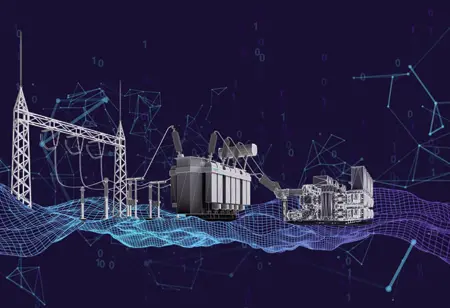Thank you for Subscribing to Electrical Business Review Weekly Brief
I agree We use cookies on this website to enhance your user experience. By clicking any link on this page you are giving your consent for us to set cookies. More info
Energy Storage Innovations: Shaping a Reliable and Sustainable Energy Future
A range of cutting-edge technologies, including batteries, flywheels, and pumped hydro storage, are at the forefront of this transformative journey.

By
Electrical Business Review | Thursday, October 12, 2023
Stay ahead of the industry with exclusive feature stories on the top companies, expert insights and the latest news delivered straight to your inbox. Subscribe today.
As the global demand for electricity surges and the urgency to transition to cleaner energy intensifies, energy storage solutions are emerging as pivotal players in ensuring a stable power supply and effectively managing peak demand.
FREMONT, CA: A range of cutting-edge technologies, including batteries, flywheels, and pumped hydro storage, are at the forefront of this transformative journey, heralding a new era of sustainable energy management.
Batteries: Pioneering Portability and Adaptability
Storms have come a long way from powering handheld devices to becoming integral components of modern energy systems. Advanced battery technologies, such as lithium-ion and solid-state batteries, are revolutionising the grid's dynamics by offering rapid response capabilities and high energy density.
In Australia, the Hornsdale Power Reserve is setting benchmarks in grid stability with its colossal lithium-ion battery installation. With a capacity of 1500 megawatt-hours, this system can respond within milliseconds to fluctuations in supply and demand, injecting or absorbing energy to maintain grid frequency. It is a remarkable example of how large-scale battery storage can ensure power reliability and facilitate the integration of renewable sources.
Flywheels: Unleashing Kinetic Potential
Flywheel energy storage presents a unique approach to meeting grid demands. These spinning devices store kinetically and release energy as electricity when needed, offering high cycle efficiency and rapid response times. They are suitable for applications requiring frequent and fast adjustments to grid imbalances.
In the heart of Ireland, the Irish Electricity Supply Board (ESB) is experimenting with flywheel technology. The ESB aims to stabilise grid frequency and enhance its capacity to manage unexpected power fluctuations by harnessing the energy stored in these spinning wheels. This endeavour showcases how flywheels can contribute to the stable operation of modern power systems.
Pumped Hydro Storage: Capitalising on Gravitational Energy
Pumped hydro storage, a well-established technology, remains a pillar of energy storage due to its reliability and scalability. It leverages gravitational potential energy by pumping water uphill during periods of low demand and releasing it downhill to generate electricity during peak usage.
China's vast Three Gorges Dam exemplifies the potential of pumped hydro storage on a grand scale. This hydroelectric power station, with its immense reservoirs, plays a vital role in smoothing out energy supply and demand imbalances across China's grid. Its ability to store gigawatt-hours of energy helps the nation accommodate renewable sources and maintain stable energy delivery.
Charting the Course Forward: Collaboration and Advancements
Collaboration between governments, industries, and researchers is vital as the energy sector continues to undergo a paradigm shift. The goal is to optimise existing energy storage technologies and pioneer new solutions that cater to diverse needs and geographic conditions.
Research endeavours are underway to address challenges such as battery lifespan, resource scarcity, and environmental impact. Breakthroughs in materials science, such as solid-state electrolytes for batteries, are on the horizon, promising safer and more efficient energy storage options.
In conclusion, energy storage technologies reshape how we generate, distribute, and consume energy. Batteries, flywheels, and pumped hydro storage contribute to grid stability and peak demand management, enabling the integration of renewable sources and reducing our reliance on fossil fuels. These technologies hold the key to a reliable and sustainable energy future as they evolve.








